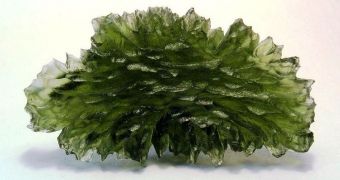A collaboration of German experts from the Max Planck Institute for Polymer Research (MPI-PR), in Mainz, and the Technical University Darmstadt (TUD) announces the development of a transparent superamphiphobic coating made of glass, a material that repels both water and oil.
With it, experts hope to be able to create windshield, computer monitors, and eyeglasses that would never need to be cleaned. Impurities would simply fall off these self-cleaning materials, the team says.
In experiments conducted by the group, oil and water droplets rolled off the material without leaving any kind of residues behind. The same behavior was obtained even after the new material was damaged with sandblasting. This means that anything made out of it will be very resilient.
An interesting application for the superamphiphobic coating would put people cleaning the glass facades of skyscrapers out of a job. Medical equipment that are settled by dangerous microorganisms could also be made more sterile, and therefore safer.
The material is based on silica – which is also the main component of glass – and a fluorinated silicon compound that acts similar to Teflon in a non-stick frying pan. Random structures are then carved inside the compound at the nanoscale, with great care being taken to avoid any discernible patterns.
“The rounded surfaces cannot be wet even by low-viscosity oils, although this would be energetically most favorable,” explains Doris Vollmer, who is the leader of the MPI-PR science group.
She explains that tiny, spherical holes in the material cannot be made wet because they are only 60 nanometers (millionths of a meter) across. The amount of energy needed to squeeze a drop of water or oil within is simply too large.
The easy-to-produce material was tested with seven different types of liquids. None of them proved able to penetrate the porous structure, and none of them was absorbed. “Initially, a drop of the oil penetrated into the sponge-like structure, but then bounced back like a rubber ball,” Vollmer says.
“As the material repels water and oil so well, it would be suitable as a self-cleaning coating for a large number of applications,” MPI-PR Departmental Director Hans-Jürgen Butt says. The compound remains superamphiphobic even when pieces of it are removed entirely.
“The search for superamphiphobic materials is therefore more or less a case of trial and error,” concludes Hans-Jürgen Butt, adding that the German team will continue to search for more materials belonging to this class.

 14 DAY TRIAL //
14 DAY TRIAL //